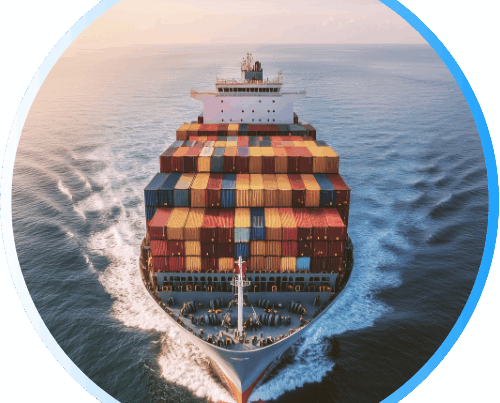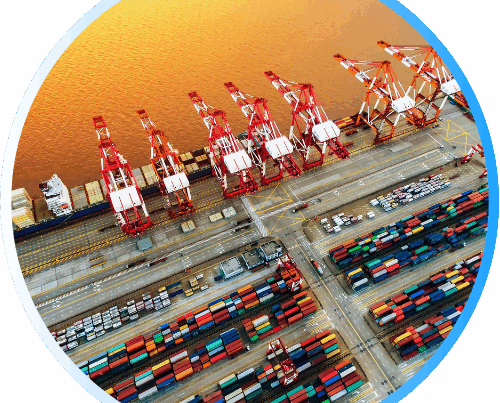Rate Related Update and Market Conditions
📌 Current U.S. Tariff Status (as of September 26, 2025)
-
New U.S. Tariffs Announced: On October 1, 2025, President Trump announced a 50% tariff on kitchen cabinets, bathroom vanities, and related products, a 30% tariff on upholstered furniture, and a 25% tariff on imported heavy trucks. The measures are intended to address surging import volumes and protect U.S. manufacturers, with further implementation details to be released in forthcoming government notices.
-
CBP Electronic Refund Enhancements: On September 30, 2025, U.S. Customs and Border Protection (CBP) will update the ACE Secure Data Portal to allow authorized trade users to provide U.S. bank details for electronic refund processing via ACH, in line with Executive Order 14247. CBP emphasized this is a preparatory step and that the transition to electronic-only refunds will be announced at a later date.
Source: whitehouse.gov, politico.com, whitehouse.gov
Rate Related Update and Market Conditions
Ocean Trade Lane Snapshot
Trans-Pacific Eastbound (TPEB)
This lane connects Asia to the U.S. Demand is unusually flat heading into Golden Week, with service suspensions failing to offset the oversupply of space. Rates remain soft and are being held down by weak booking activity.
Far East Westbound (FEWB)
The Asia–Europe corridor continues to face oversupply. Inflation and cautious consumer spending are slowing demand, while Northern European ports report vessel delays and inland bottlenecks. Rates have been trending down through September.
Trans-Atlantic Westbound (TAWB)
From Europe to the U.S., spot rates have stabilized near $1,800–$1,900/FEU after earlier declines. The Xeneta North Europe–USEC Index stood at USD 1,819/FEU in Week 38, about 5% lower than in late August. Tariff uncertainty between the EU and U.S. continues to weigh on sentiment, and carriers are adjusting strategies—some extending low Q4 pricing, others cutting October rates. Meanwhile, congestion at Antwerp and Southern Europe ports, coupled with inland equipment shortages, is keeping pressure on operations.
Air Freight Market Update
Heading into Golden Week, demand across North Asia is tightening, with elevated rates on Asia–U.S. and Asia–Europe lanes, particularly into the U.S. East Coast where volumes remain strong. South China faced major disruptions after Typhoon Ragasa, with over 500 flight cancellations in Hong Kong, though operations are now gradually resuming and backlogs should clear in the coming days. Vietnam ex-Hanoi and Malaysia are seeing higher volumes and tighter space, while Taiwan, South Korea, and Thailand remain relatively stable with manageable capacity despite localized congestion. Overall, Asia’s air freight market is trending firm into late September, with continued pressure expected through October.
Sources: xeneta.com, maersk.com, yangming.com, evergreen-line.com, supplychaindive.com
Asia–Latin America Freight & Port Update
1) Freight Rate & Capacity Snapshot
Asia → South America East Coast spot rates continue to soften amid tepid demand and ample available space, applying downward pressure on pricing. Carriers remain cautious with deployments, and no major rate spikes or capacity tightness have emerged this week.
2) Port Operations & Infrastructure
In Latin America, port operations remain stable with no significant disruptions reported. Meanwhile, DP World and Hapag-Lloyd renewed their long-term agreement for terminal expansion at Santos, promising improved throughput and handling capacity in Brazil’s busiest port.
Sources: hapag-lloyd.com
Europe Market Developments
Beyond core rate movements, several broader developments are shaping Europe trade. HMM has repurchased more than 80 million shares, reducing state ownership stakes and fueling speculation of a public sale later this year. On the China–Europe corridor, Sea Legend’s Arctic Express service departed Ningbo on September 18 and is scheduled to arrive in Felixstowe on October 8, offering a seasonal, higher-cost routing option amid recent rail disruptions. Meanwhile, Poland will reopen its border with Belarus on September 25, ending a two-week closure that stranded 130 trains and raised concerns about China–Europe rail reliability.

Carriers Increase Trans-Pacific Capacity Cuts as Rates Decline
Container lines on the trans-Pacific trade are planning more blank sailings over the next month to counter falling spot rates during a softer-than-expected pre-Golden Week period. Planned capacity reductions for October have risen significantly on both Asia–U.S. West Coast and Asia–U.S. East Coast lanes. Spot rates have fallen sharply in recent weeks, dropping below contract levels set earlier this year, which has prompted carriers to scale back supply.
Chinese Leasing Firms Consider Options Ahead of U.S. Port Fee Implementation
Leasing subsidiaries of major Chinese banks are discussing potential changes with regulators to reduce exposure to upcoming U.S. port fees scheduled to take effect on October 14. The fees will apply to Chinese-built and Chinese-operated vessels calling at American ports, based on cargo volumes per voyage. Proposals include converting vessel leases into mortgage loans and exploring other measures to mitigate financial risk, though no final decisions have been announced.


